Taken
Taken (2016-2018) is a series of spray paint and acrylic paintings addressing historical depictions of violence against women. In the series, I take historical paintings depicting violence against women and remove and isolate the women from the violent context. I started this series because a lot of biblical stories, myths and legends that paintings used to be based on, where very heavy on violence against women, and in the paintings themselves, the women are more often than not painted by men and highly sexualized... the whole trend disturbed me. The series focused on subjects such as Susanna and the Elders, Syrinx and Pan and Cleopatra’s suicide.
Prints of this series are available here.
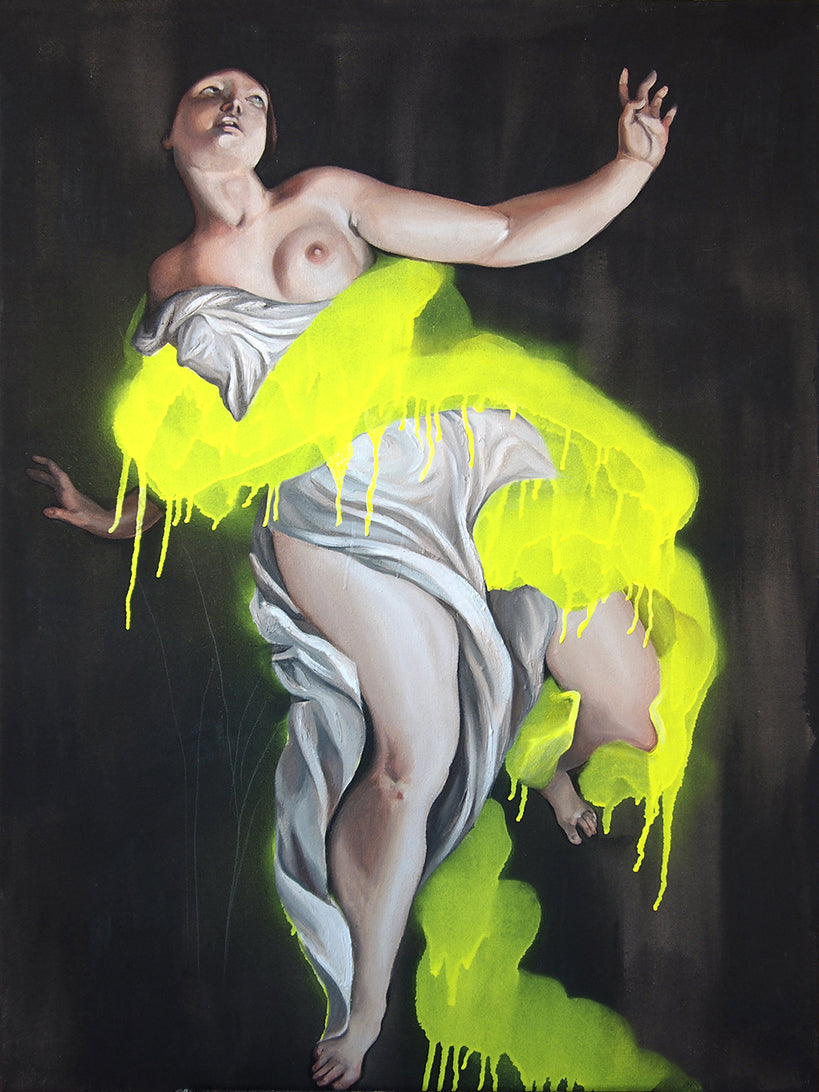
Syrinx was the first in the Taken series, and really started it all. In Classical Mythology, Syrinx was a nymph known for her chastity. In the story of Syrinx and Pan, she is pursued by the greek god Pan as he tries to force himself on her. Desperate, Syrinx runs to the river's edge and pleads for help. In response, she is transformed into water reeds, which Pan proceeds to harvest and fashion into a set of pan pipes. The frustrating end to this story aside, the paintings of the subject range drastically. The painting this is based off of Pan and Syrinx by Ludovico Dorigny, has very dark overtones, Pan depicted almost demonically, reaching from the shadows to grab Syrinx as she runs. Before Taken evolved into the series that is is today, it started as this painting and a desire to do a large study of drapery, but once I learned more about the painting I knew I had to make it something more. I took Pan out of the image, conflicted by the beauty of the painting, and attempted rape that it depicted. I was pleasantly surprised that when Pan was removed from image, Syrinx almost look like she was floating or falling. I loved the difference it made in the image.
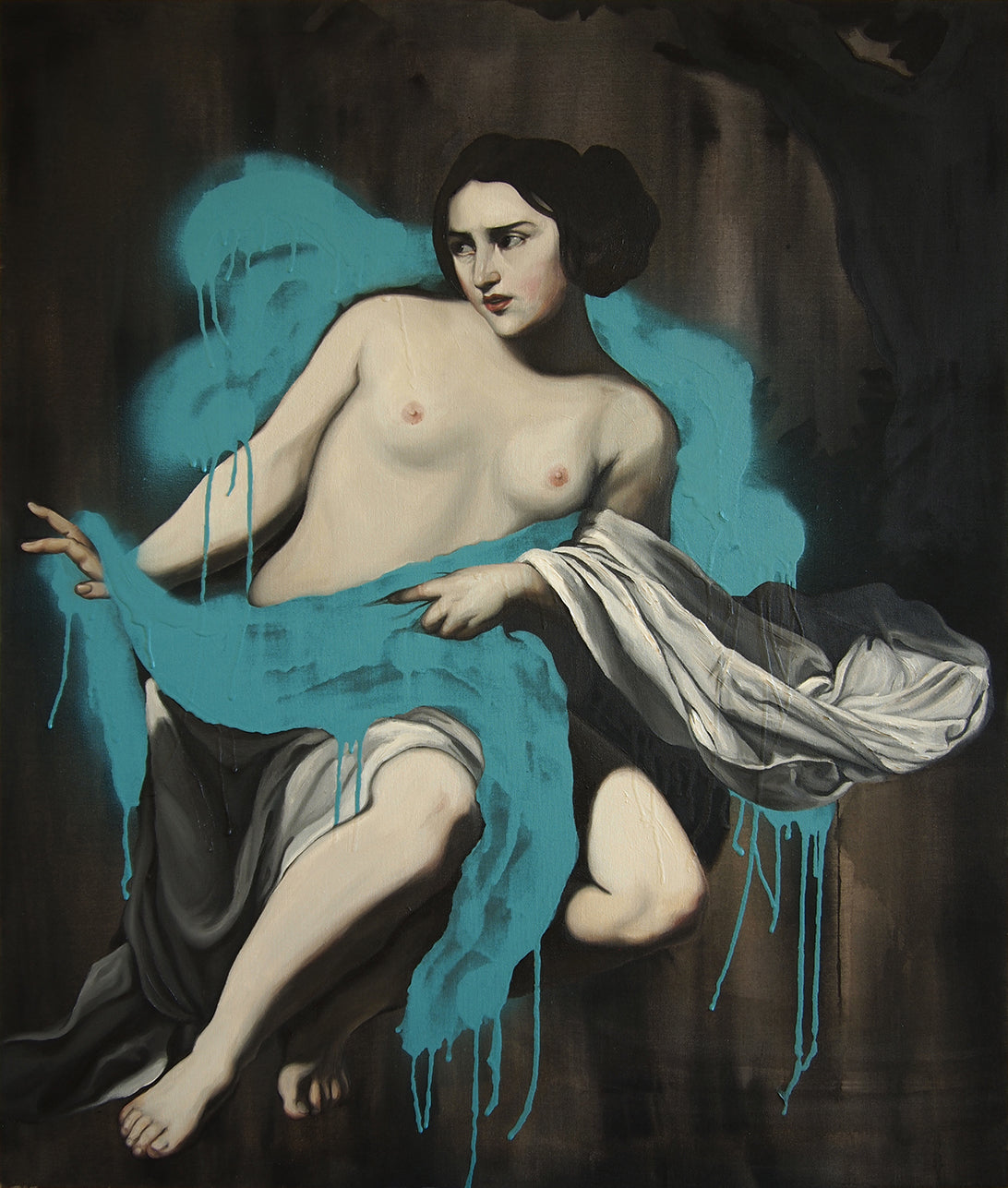
Susanna was the clear next step in the series. The story of Susanna and the Elders has always amazed and horrified me. In the biblical story, Susanna is bathing when she's observed alone by two older men. After following her home, they accost her, threatening to claim to her husband that she was meeting with a man in gardens unless she'll have sex with them. After refusing to be blackmailed, she's arrested for promiscuity and sentenced to death. After a while, Daniel comes along and saves her, forcing the elders to be cross examined and when their stories don't line up, they're put to death and Susanna is freed. The story of Susanna and the elders has always stood as an easy reminder of how shitty it was to be a woman in this time. Beside the fact that she was accused by two men and their word taken against hers, in the end was she helpless, was unable to defend herself against the law and had to rely on some man by chance coming to protect her. The fact that it is was a popular subject of paintings only furthers the point.
This painting was based off of Massimo Stanzione's painting of the subject, which depicted her cornered by two men, shushing her, touching her and pulling at her clothes. The effect is gut churning in it's horribleness. But isolated for the shitty situation, Susanna appears strong and defiant and perfectly capable of taking care of herself.
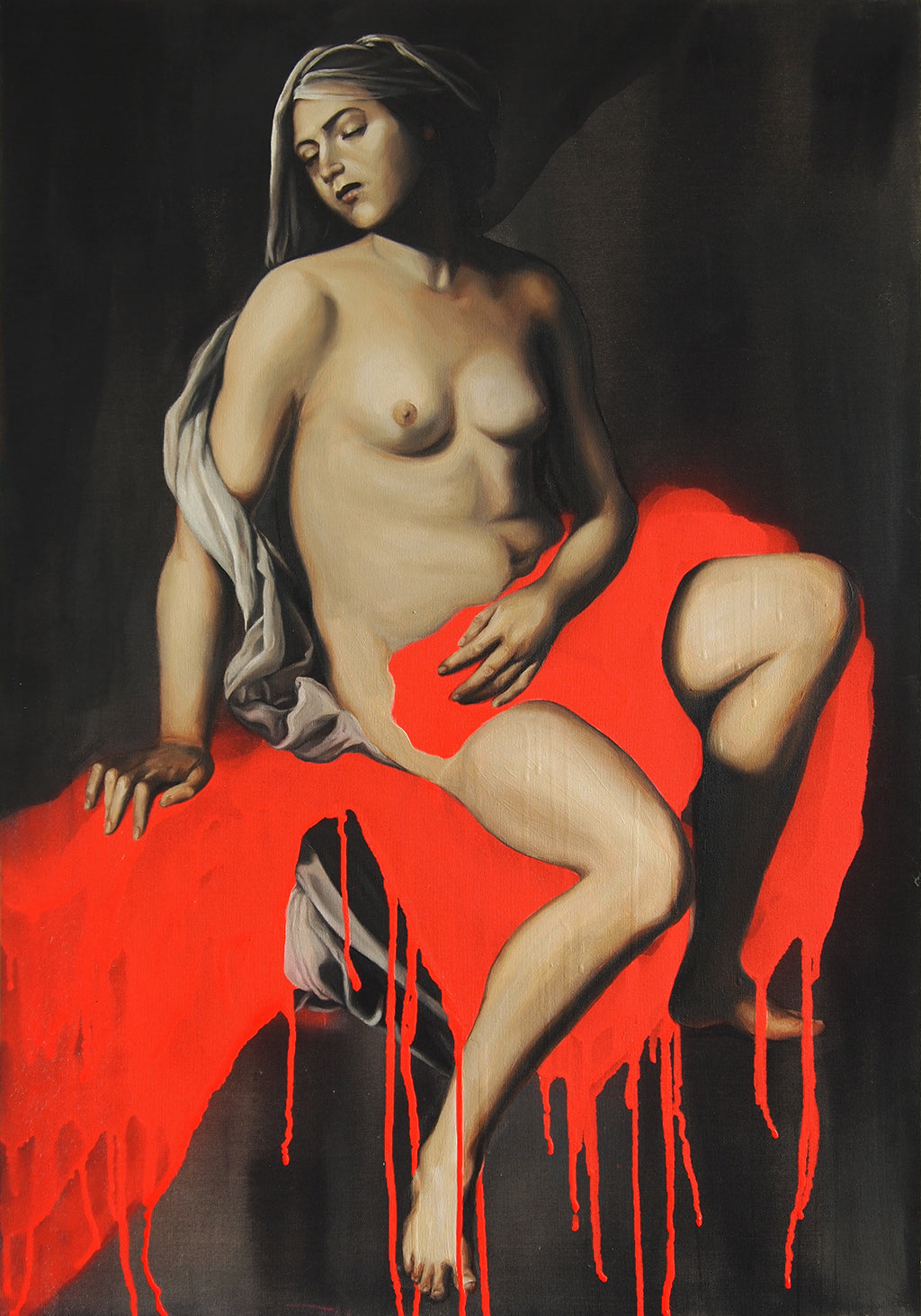
I was hesitant to include Cleopatra in this series, as before this point the series focuses more on men's infliction of violence towards women. Cleopatra's story is a suicide. I included Cleopatra in the series because of the way her suicide is always depicted. Male artists all too often used the story of Cleopatra as an excuse to paint a sexy woman writhing in bed, exposing her breasts, whilst a snake or two bites them. I find the sexualizing of a woman taking her life to be extremely distasteful, and knew I had to include her in the series. This painting, based after Massimo Stanzione's Cleopatra, is one of the less absurd depictions of the event, but focuses more on Cleopatra's body and sensual expression than it does the snake that was biting her. Taking her out of the context of her suicide, we can appreciate Cleopatra as a sensual beauty all her own, without the overtones of suicide, violence and death tagged on as an excuse to paint a nude woman.
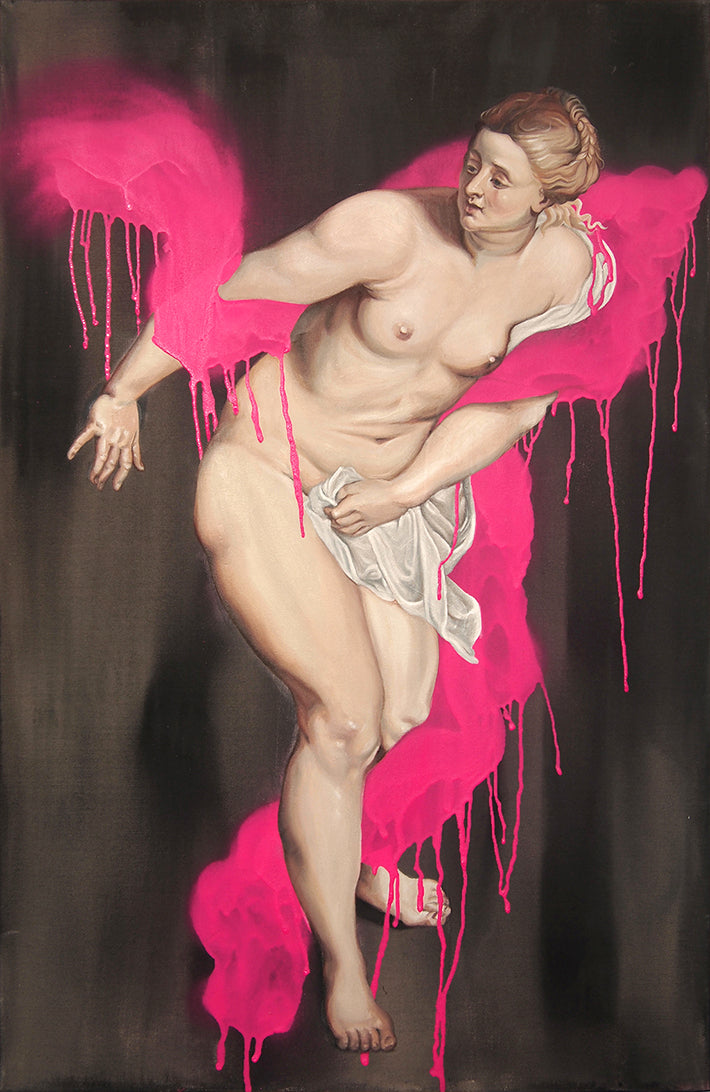
After the first, I wanted to revisit Syrinx again, because of the huge variety in depictions of her in historical paintings. While the first in the Taken series was taken from a very dark portrayal of the story, many depictions show Syrinx as playful and coy, as if playing hide and seek with pan amidst the reeds. This Syrinx, based after Ruben's painting of the subject, shows her giving a small smile as she looks out behind her. Without the context of Pan, she appears a sweet figure exploring her surroundings while quietly covering herself, making her a clear inclusion in the series.

Daphne's story may have been one of the first that really stopped me. Bernini's statue of Apollo and Daphne is required learning for most art students, and the subject is so often skimmed over. In Greek mythology, after pissing off Cupid, Apollo is shot with a golden arrow making him fall in love with the nymph Daphne, who is then shot with a lead arrow making her despise Apollo. Further driven by Daphne's chastity, Apollo is set on having Daphne and pursues her constantly. When finally Cupid intervenes giving Apollo an advantage in his chase, Daphne knows that she will be caught, and cries out for help from her father, who turns her into a tree.
This story had so many bad parts for me, but it's the using a woman's life to punish a man that really bothers me.
For this painting I chose to portray Daphne fleeing in the moments before she is caught, giving a sidelong glance at her pursuer, and looking calm but defeated.
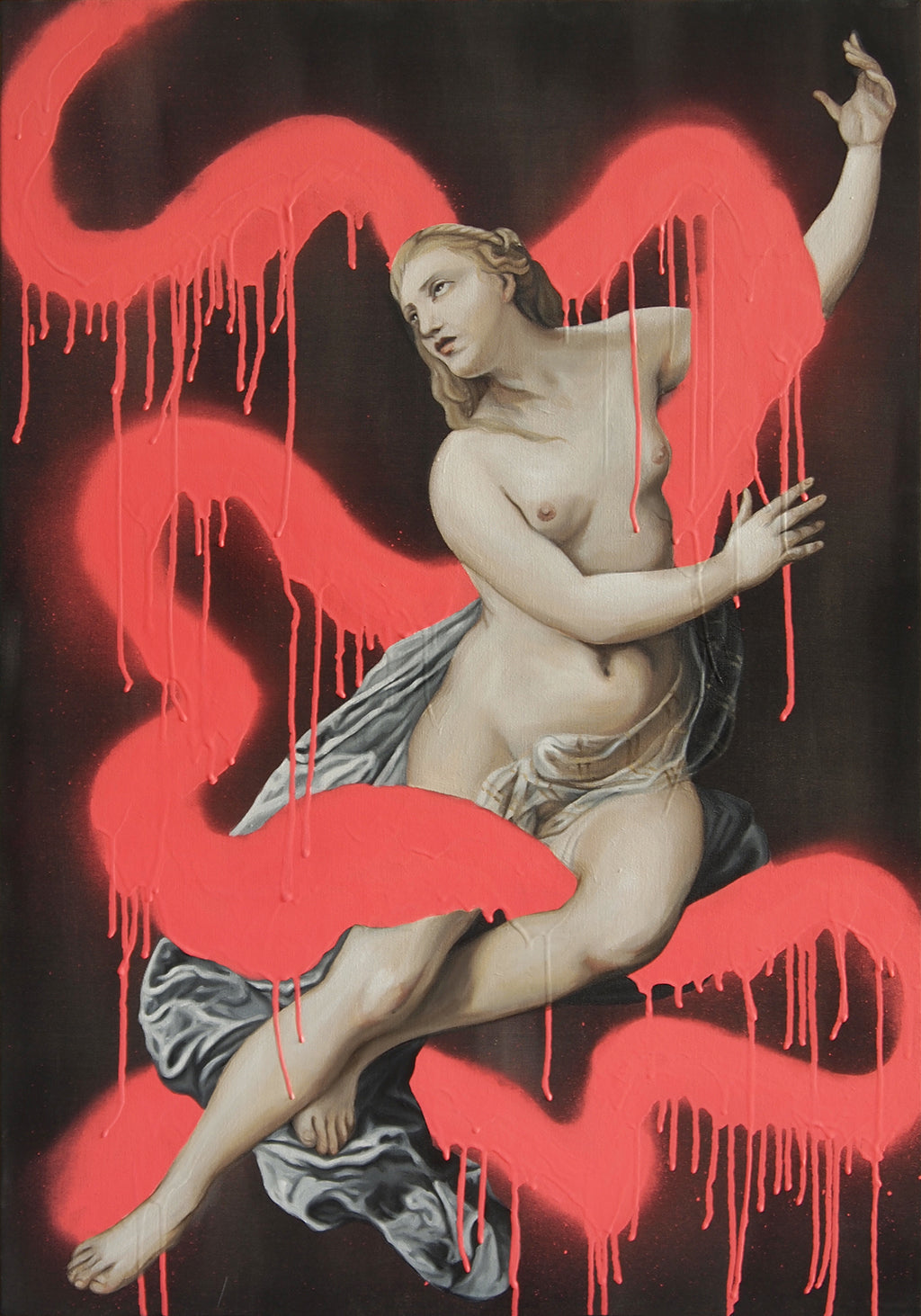
Prior to this series, I was unfamiliar with Andromeda's story, despite seeing many paintings depicting her. Usually shown shackled to a cliff and cornered by a sea monster, Andromeda is another sad story of a woman being used as a pawn to punish a man.
In Greek mythology, Andromeda's father, Cepheus, angered Poseidon, so he stole Andromeda away, stripped her naked and chained her to a rock and set a sea monster upon her. Her father accepted this sacrifice. Perseus showed up and rescued her and then took her as his bride, and ended up turning the man she was supposed to wed (her uncle, ew) to stone.
In this painting, I've freed her from her shackles, but the pain and longing in her expression is still present.
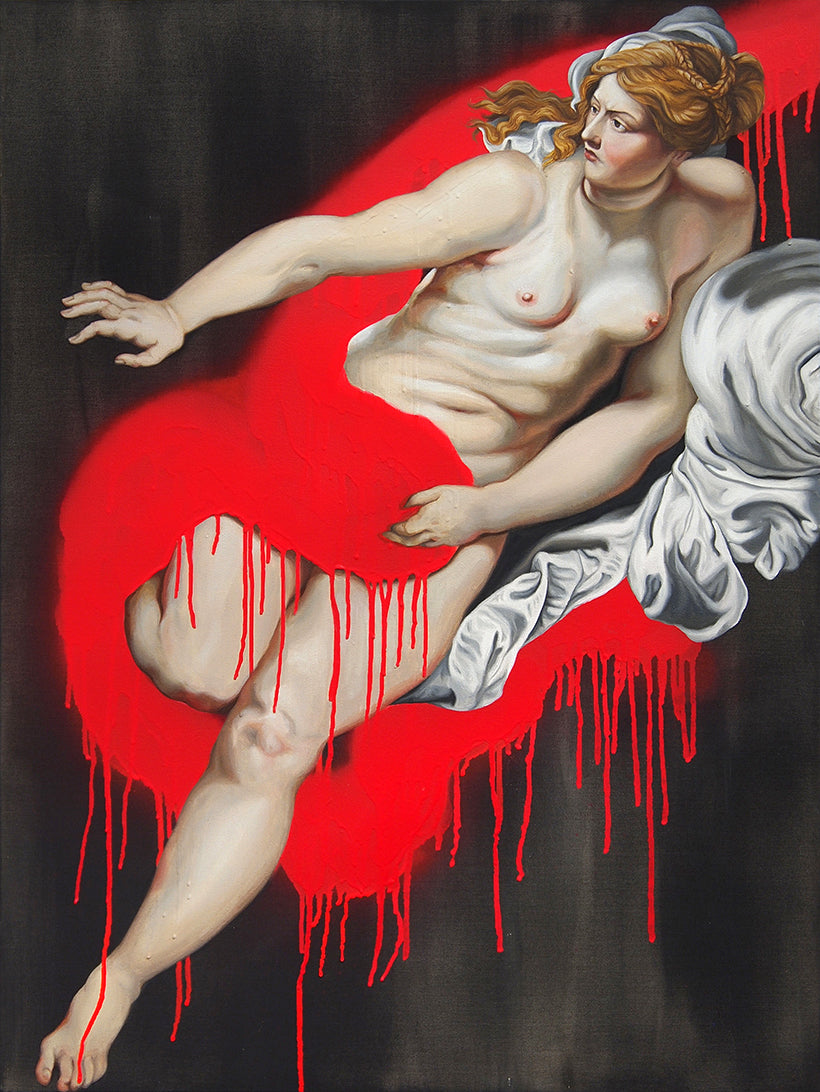
Lucretia's story is one rife with violence and sexualization, making her the perfect subject to be included in the Taken series. Here she is pictured in one of numerous portrayals of her rape, this one after Rubens. Considered a legendary heroine of ancient Rome, Lucretia's story is often used to tell the story of the rebellion and the foundation of the Roman Empire, first with her rape, then her eventual suicide. Both incidents are popular subjects for paintings and quite often highly sexualized.
I've chosen to depict Ruben's version , as despite the intimate setting and the violence in the painting, when removed from the painting, Lucretia strikes a strong and fiercely empowered figure.
This painting was the last in the Taken series and was sadly lost in a studio fire in 2018.

